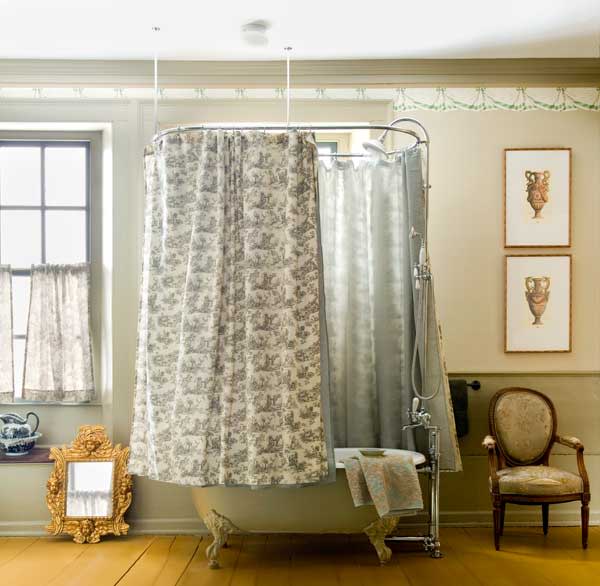
A “furnished” bathroom in a Massachusetts Georgian house: floor, wainscot, and border follow elements of the bedrooms, while the Victorian-era tub dates to the adoption of indoor plumbing.
The following design ideas work for early homes and also for new houses designed in a historical style. Broadly speaking, we offer three approaches: (1) add fixtures to a period room; (2) imagine the bath that would have been added when indoor plumbing became standard; (3) adopt a Colonial Revival vocabulary for the room.
1. Add Fixtures to a Period Room
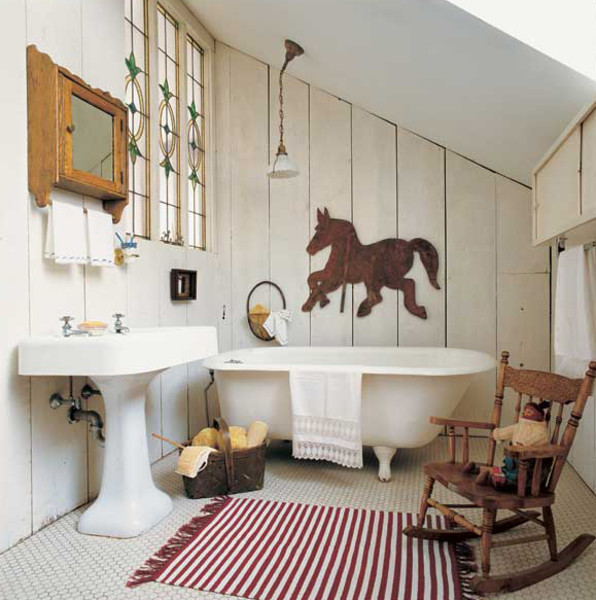
Early 20th-century fixtures mingle with plank walls, a vintage medicine chest, and a weathervane in an early dwelling.
Gross & Daley
Early houses often gave up a bedchamber (or storage room) to become an indoor bathroom. This is the look to emulate: Use elements that are (or could have been) original to the house, and to that period background add modern fixtures.
In a simple, late 18th-century dwelling with plank walls or wainscots, for instance, you might start by finishing a portion of the bathroom walls with a similar board treatment instead of tile. If the house is grander—say, high-style Georgian or Greek Revival—make sure the wainscot matches, opting for raised panels. If woodwork is scant or nonexistent elsewhere in the house, choose paint colors, or paint treatments such as stenciling, to set the stage.
A related option is to choose an early style you like—Shaker is popular—and go with it. The flush drawer faces and flat-panel doors typical of Shaker built-ins and furniture are clean and simple, making the style a good choice whether the house is old or new. Shaker craftsmen were masters at creating space for both storage (think cabinets with many drawers) and display (trim molding with pegs).
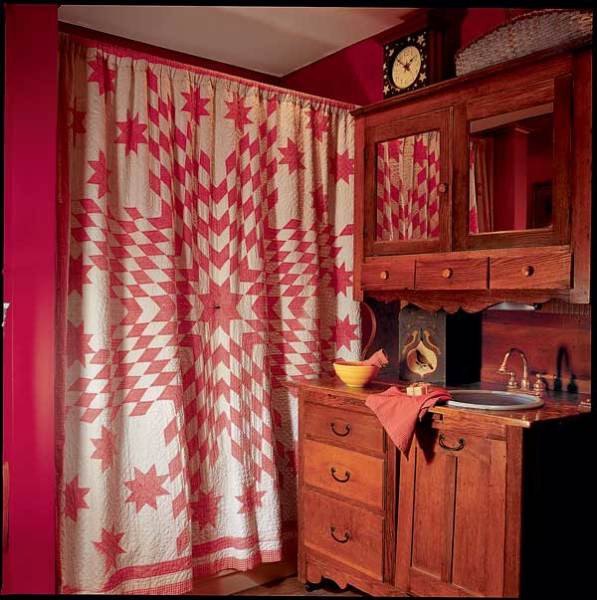
A quilt becomes a shower curtain in a bath with a cabinet adapted from an antique cupboard.
Jessie Walker
To minimize the visual impact of modern white tubs, sinks, and toilets, pick out plainer styles that will help these necessary pieces blend in. One trick is to use fixtures with perimeter details that suggest molding; Kohler’s popular ‘Memoirs’ pedestal sink is a ubiquitous example.
If you want a freestanding bathtub, consider one trimmed with copper as a nod to both the homely bathing tubs of yore and the high-style tubs of late 18th-century gentry. You can create a furniture van ity with a drop-in sink, and build a surround for the bathtub. A vanity based on an early American cabinet might work for a Federal-style home; in a Saltbox or Cape, a primitive cupboard or dry sink is a good model.
Using soapstone or slate for the sink basin and countertop lends an early sensibility in some regions. Faucets, taps, and other fittings should be finished in metals that fit with the era of the house. Black iron, aged tin, pewter, even antiqued brass are materials typical of the late 18th century. You can go simple and modern, or opt for faucets that resemble 19th-century gooseneck and hand-pump designs. Coordinate your lighting choices to complement other elements in the bath.
2. Imagine a Bath Added in the Past
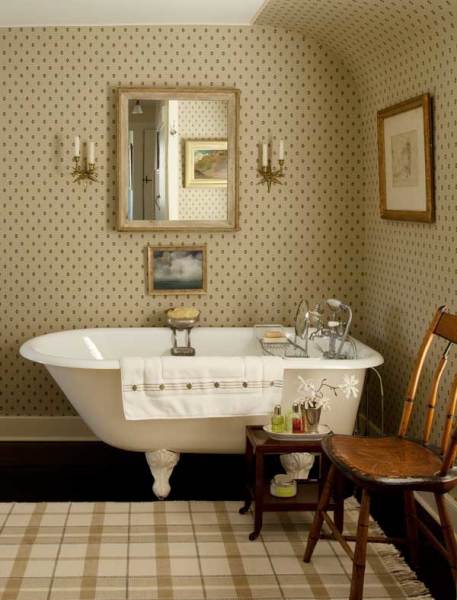
An “old-fashioned” bathroom is at home in an 18th-century Palladian house in Connecticut.
Tim Street-Porter
You are not the first owner to bring plumbing indoors. Assuming it was added in good taste and with high-quality materials, what would that earlier bathroom have looked like? (Some owners inherit an earlier bath, whether from 1890 or 1940, that is appropriate and still functional.) With the popularity of pedestal sinks and clawfoot tubs, Victorian-era bathrooms are easy to simulate.
Add a wainscot of tile or beaded board. Consider using Victorian Revival porcelain fixtures, gaslight-era lighting, and hardware in antiqued brass or nickel. Hang lace at the windows and lay a needlepoint rug. A furniture-like sink vanity may be Renaissance Revival or Eastlake style, painted or varnished.
Follow a similar process to add a 1915 bath, or one that seems to date to the 1930s.
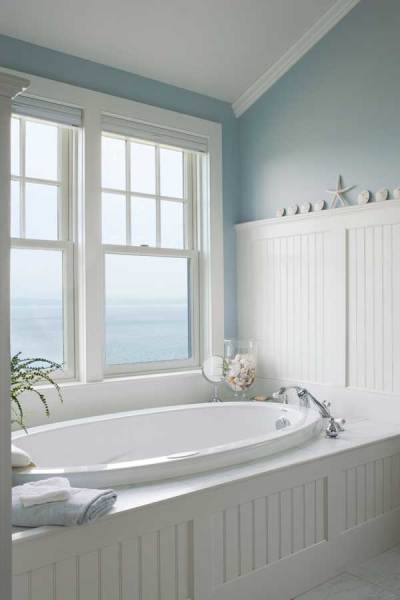
Classic blue and white suit a new Colonial Revival house designed by Connor Homes.
3. Adopt the Colonial Revival.
Bring the bathroom into the 20th century with a full-on Colonial Revival retrofit. This last option may be the easiest to pull off, especially if your bath is already equipped with fixtures and fittings from the first half of the 20th century.
No need to choose iron over shiny brass for hardware and lighting finishes; Americans during the long Colonial Revival era, roughly 1876 to 1945, embraced both with equal enthusiasm. Stylish and ever-popular fixtures like plain pedestal and wall-hung sinks, porcelain towel bars, and built-in tubs are readily available.
You might adapt a country cottage look, or embrace a more urban and upscale neoclassical style complete with furniture-quality cabinets and marble. Create the look with molding profiles and paint colors—particularly white for trim. Bath fixtures with neoclassical lines, and Colonial Revival light fixtures, are widely available.







